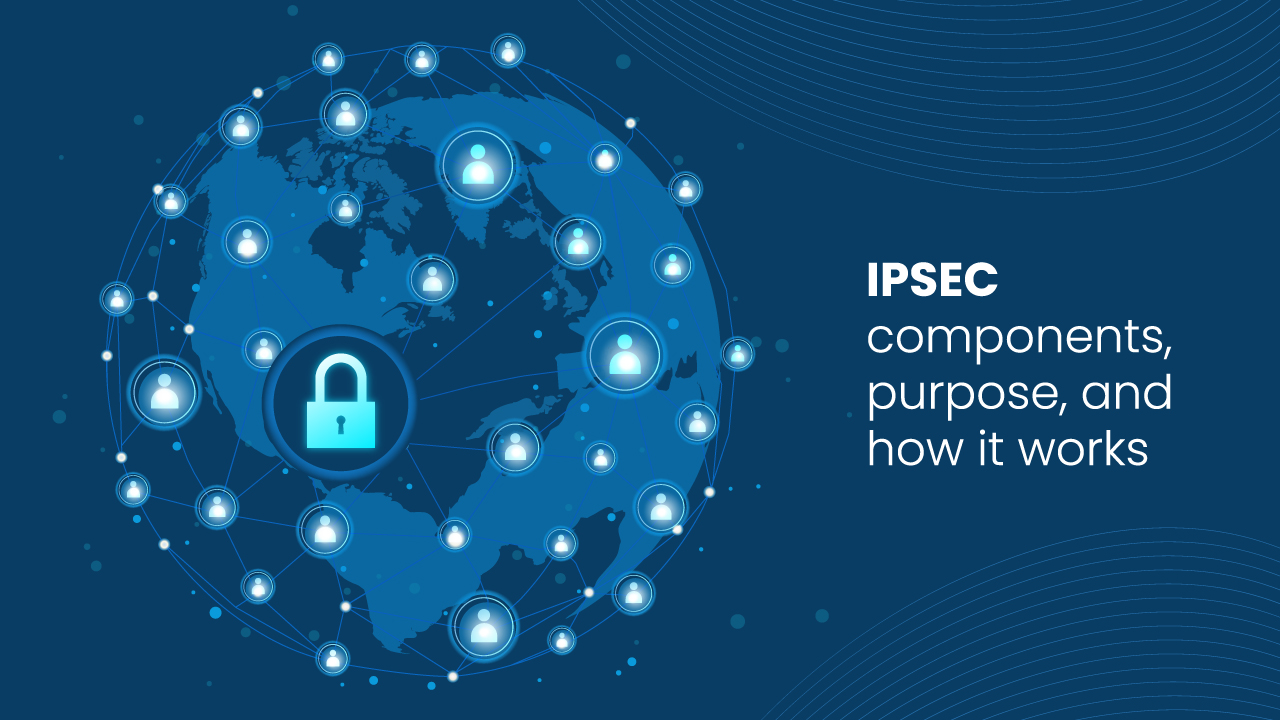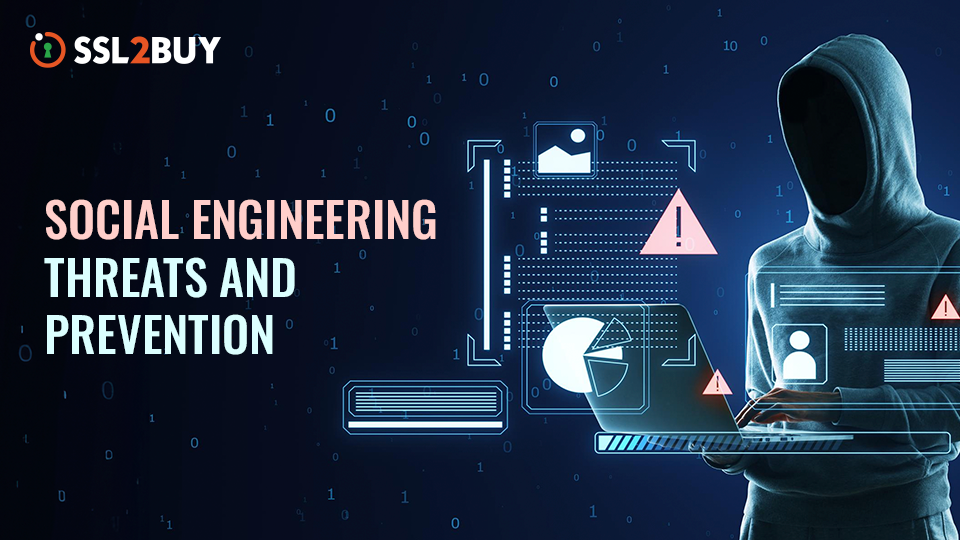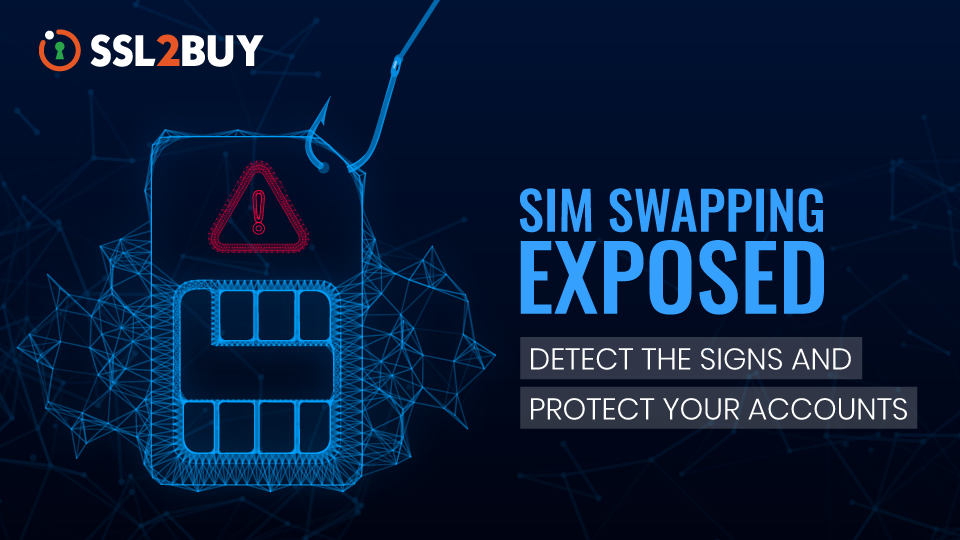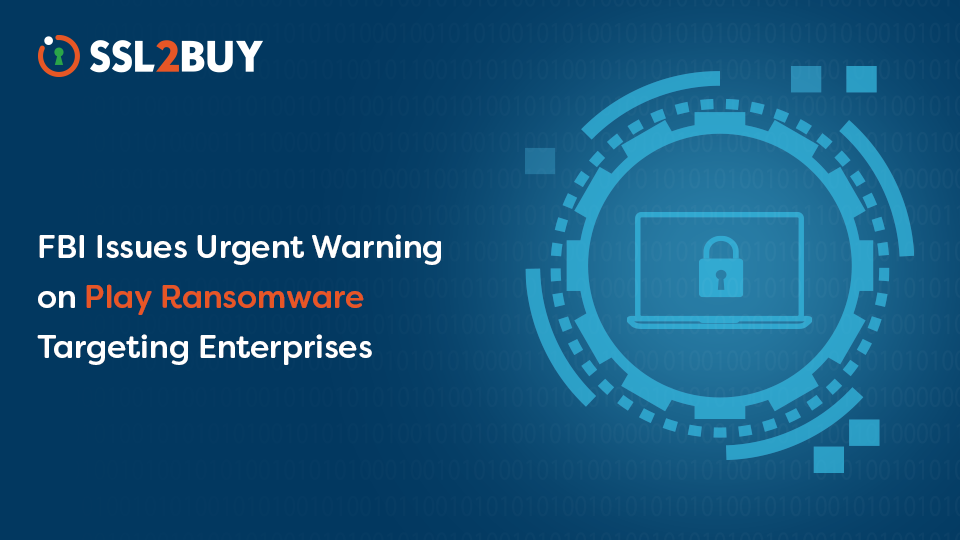
IPsec is a set of Internet Protocols offering secure connection between devices. It is generally used by Virtual Private Networks for encrypting IP packets and authenticating the sources.
IPsec Fundamentals and Their Application in Secure VPN Communication
You may have heard about SSL and how it simplifies complex security challenges in eCommerce. SSL certificate enables you to communicate with a website through encryption. But did you know how to connect to the network privately rather than communicating with a website?
This is where IPsec comes in.
Most of the security experts don’t acknowledge the use of IPsec. IPsec is a type of secure data communication that is used to establish a Virtual Private Network.
The digital ecosystem is vulnerable and in the current AI environment, every company is now a reachable target. No matter how large or small your organization is, the revenue pipelines are potentially at risk from a breach.
Thus, it’s high time to invest in advanced security technologies like IPsec to protect your company from data theft and malware.
Let’s explore the components, purpose and how it works to provide secure communication between the sender and receiver.
What is IPsec?
IPsec is a set of protocols that are commonly used to secure internet connections. There are three main types of IPsec protocols, which are Authentication Header (AH), Encapsulating Security Payload (ESP), and Internet main Exchange (IKE).
In addition to offering services such as access control, data source authentication, and data encryption, this architectural framework for network data security describes how to pick security protocols, decide security algorithms, and exchange keys between peer levels.
Uses of IPsec
You can leverage IPsec to perform the following action:
- Sending secured data by using public connectivity
- Creating encrypted data applications
- Authenticating data quickly
- Identifying the sources of data sender
- Protecting network by encrypting tunnels
Now you have understood the uses of IPsec, let’s understand its encryption and how it protects the network from replay attacks.
What is IPsec encryption?
IPsec was created to provide IP-based network layer security that serves all IP-based network communications while remaining entirely transparent to upper-layer protocol applications.
These protocols validate the data source, ensure data integrity, and prohibit replicating identical packets. To guarantee data secrecy and provide partial confidentiality to the data stream, IPsec uses Encryption. Let’s learn more about Encryption and its types.
IPsec encryption is an algorithm based on mathematical functions. IPsec encryption works by transforming plain text into a ciphertext, making it unable to be read by anyone who doesn’t have the correct key. There are types of algorithms, i.e., symmetric and asymmetric, that are created to provide speed and security to communication.
Symmetric Encryption: It uses the same key for both Encryption and decryption.
Asymmetric Encryption: It uses different keys for Encryption and decryption.
Besides the utilities of the keys, symmetric Encryption is faster and simpler than asymmetric Encryption. On the other hand, asymmetric Encryption is more secure and complex than symmetric Encryption, as it requires two keys. Apart from these two encryptions, IPsec also supports these different kinds of encryption algorithms:
- DES
- Triple DES
- ChaCha
- Blowfish
- AES
IPsec can secure the confidentiality, integrity, and authentication of IP communications depending on how it is deployed and configured.
Components of IPsec
IPsec works on the following components, you just need to understand its components to learn how it works.
-
Encapsulation Security Payload (ESP)
Encapsulating Security Payload is designed to provide authenticity, confidentiality and integrity, helping the users to prevent data tampering. It also protects the communication content from theft.
ESP additionally provides all IPsec encryption services. Encryption converts a clear message into a scribbled set-up to conceal the message’s content. On the other hand, it converts the communication content from a scribbled set-up to a clear one. Only the correspondent and the authorized receiver can read the information after it has been encrypted or decrypted.
Furthermore, ESP offers an authentication mechanism known as ESP authentication. It is used to get integrity and authentication for the payload rather than IP header.
-
Authentication Header (AH)
Using the same methods as ESP, the Authentication Header (AH) offers confirmation and veracity to protect against information altering. AH also includes a voluntary anti-replay shield, which prevents unauthorized packet retransmission. The load is unaffected. Although AH prevents tampering with the packet’s contents, the correspondent and recipient’s identities are known.
Furthermore, the Authentication header does not ensure the confidentiality of the data. The message contents can be read if data is interrupted and just AH is utilized. ESP safeguards data confidentiality.
-
IKE ( Internet Key Exchange)
To expedite and automate SA creation and key exchange between parties exchanging data, IPsec employs the Internet Key Exchange (IKE) protocol. Using keys ensures that a message can only be accessed by the dispatcher and recipient. IPsec needs that key be redesigned, regularly so that the users can connect securely.
IKE oversees the development of stimulating keys; however, the user can control the key strength and refresh frequency. Regularly refreshing keys maintains data secrecy between correspondent and recipient.
How does IPsec work?
Now finally you understand the components of IPsec, let’s learn how these components work and create a secure path for senders and receivers to communicate.
What are IPsec modes?
IPsec works on two modes to exchange traffic for Virtual Private Network in the most secure ways. There are two types of IPsec modes: tunnel mode and transport mode.
-
Tunnel Mode
Tunnel mode encapsulates the original IP packet into another packet in the VPN tunnel to protect traffic. This method authenticates peers using pre-shared keys with IKE or digital certificates with IKE.
When hosts on distinct private networks want to interact over a public network, this is most typically utilized. This mode, which can be utilized by both VPN clients and VPN gateways, protects communications that originate or terminate in non-IPsec systems.
-
Transport Mode
Protect traffic by delivering packets directly between the two hosts that have established the IPsec tunnel. That is, when the communication and cryptography endpoints are the same. The IP packet’s payload is encrypted, but the IP header is not.
VPN gateways that offer encryption and decryption services to protected hosts are not permitted to employ transport mode for protected VPN connections. If the packet is intercepted, the IP addresses of the source and destination can be changed. Because of its design, the transport mode can only be employed when the communication and cryptography endpoints are the same.
What is the difference between the Tunnel model and the Transport mode in IPsec?
Both tunnel and transport modes in IPsec offer secured communication. However, both work on different methodologies. The Tunnel mode secures the entire connection (entire tunnel) while sending data from device A to device B. On the other hand, transport mode only encrypts the data that is being sent without establishing any secure connection.
Purpose of IPsec
IPsec is widely used for establishing VPNs because it provides a high level of security and allows several private networks to securely connect over the internet. IPsec secures all data sent between terminal locations at the network layer, regardless of network application.
Users that connect via VPN to a private corporate network are placed on the network itself, providing them with the same rights and operational capabilities as users joining from within the network.
Depending on the user’s requirements, an IPsec-based VPN can be built in a variety of ways. IPsec is typically utilized by a combination of clients, servers, firewalls, and routers. Interoperability is essential since these components may come from different suppliers.
IPsec VPNs provide seamless access to enterprise network resources, and users are not required to use web access (access can be non-web); it is therefore a solution for applications that require automated communication in both directions.
Difference between IPsec and SSL
Here are the key differences that you can find between IPsec and SSL:
| Features | IPsec | SSL |
|---|---|---|
| Concept | IPsec is a series of protocols that provide security for the Internet Protocol. | SSL is generally used to conduct secure transactions online. |
| Workings | It operates at the OSI model’s Internet Layer. | It operates between the OSI model’s transport and application layers. |
| Configuration | IPsec configuration is difficult. | SSL configuration is rather simple. |
| Uses | IPsec is a protocol that is used to secure a Virtual Private Network. | SSL encryption is used to secure Internet transactions. |
| Installation | The vendor is in charge of the installation process. | The installation procedure varies depending on the vendor. |
| Implementation | Changes to the operating system are necessary for implementation and No changes are required for applications | No changes to the operating system are necessary for implementation; however, changes to the application are required |
| Storage | IPsec lives in the system space IPsec has a pre-shared key. | SSL resides in user space and does not use a pre-shared key. |
What is a VPN? What is an IPsec VPN?
A VPN or Virtual Private Network offers secure connection between multiple devices. By using a VPN, the users can send secured data through public connectivity. The VPN protects the communication data through encryption.
VPNs enable safe access to the exchange of secret data across shared network infrastructure, such as the public Internet. For example, when workers work remotely rather than in the office, they frequently utilize VPNs to access business files and programs.
To build and maintain these encrypted connections, many VPNs employ the IPsec protocol suite. The OSI model is a simplified description of the mechanisms that enable the Internet to function.
IPsec VPN vs. SSL VPN – The OSI Model layer, Implementation & Access management
Both IPsec VPN and SSL VPN serve the same purpose of exchanging communication between two devices. However, there are significant differences between these technologies. Let’s learn them in detail.
The OSI model layer
One of the most significant distinctions between SSL and IPsec is which tier of the OSI model each belongs to. The OSI model is an abstract picture, divided into “layers,” of the mechanisms that enable the Internet to function.
The IPsec protocol suite runs at the OSI model’s network layer. It operates directly on top of IP (the Internet Protocol), which is in charge of data packet routing.
Meanwhile, SSL runs at the OSI model’s application layer. Instead of simply encrypting IP packets, it encrypts HTTP traffic.
Implementation
IPsec VPNs often need the installation of VPN software on the devices of all VPN users. To connect to the network and access their programs and data, users must log into and execute this software.
In contrast, all web browsers already support SSL (whereas most devices do not enable IPsec VPNs by default). Users may connect to SSL VPNs using their browser rather than a separate VPN software package, with little assistance from IT personnel. (However, this implies that the VPN does not secure non-browser Internet activities.)
Access management
Access control refers to security rules that limit user access to information, tools, and software. Properly established access control guarantees that only the appropriate individuals have access to sensitive internal data and the software programs used to view and update that data. Because no one outside the VPN can view data within the VPN, VPNs are often used for access control.
Many big organizations must have several layers of access control, such as preventing individual contributors from having the same levels of access as executives. When using IPsec VPNs, each user who connects to the network becomes a complete member of that network. They have access to every data held within the VPN.
SSL VPNs, on the other hand, are simpler to set up for individualized access control. IT teams can provide users access to certain applications.
Advantages of IPsec
IPsec provides the following benefits:
-
Flexibility
The fact that it is given at the IP layer is a big advantage. This means that IPsec can be used to secure any type of Internet traffic, regardless of the communication apps employed. The apps must not be aware of the protection and must not be altered in any way to permit it.
It also implies that the level of protection may vary greatly: A single SA (security association) can secure all communications between two hosts or two networks, a single application-specific session, or multiple intermediate gradations of coverage. The amount and type of IPsec security to be employed, as well as the keys used to provide that security, are both flexible and configurable.
-
Scalability
IPsec has a significant benefit over other network-related protocols or technologies in that it can be implemented gradually. An organization that rents private communication lines to connect multiple sites can use one of those lines to join two sites via an IPsec-protected VPN.
IPsec is usable outside of enterprise settings. When using a laptop to access a PC at home or work, mobile workers may choose to use IPsec to encrypt their connections.
-
Confidentiality
The second advantage of IPsec is that it provides confidentiality. IPsec uses public keys during any data exchange, which aids in the safe transport of secret data. As a result, keeping the keys secure ensures secure data transport. Furthermore, these keys aid in confirming that the data originated from the correct host. As a result, forging data packets becomes nearly impossible. As a result, when delivering public keys, our Server Administrators always assure security.
-
Zero dependencies on the application
As previously discussed, IPsec security is implemented at the network layer. As a result, it is independent of the apps used.
IPsec simply necessitates a change to the operating system. As a result, IPsec-based VPNs do not have to be concerned about the type of application. That is not the case with SSL-based VPNs, where individual programs must be modified. This is yet another explanation for IPsec’s appeal.
Disadvantages of IPsec
The following are IPsec’s disadvantages:
-
Multiple access
One of the most important disadvantages of IPsec is its large access range. As there are multiple accesses, you can have multiple threats. Malware found on a computer on your home network might swiftly propagate to other devices in the business network.
-
High Cost
Using IPsec has a cost: extra processing and larger packets. This includes both the IKE traffic that precedes IPsec-protected communications and the additional information that is added to each IPsec-protected packet.
-
Difficulties in Troubleshooting
IPsec can necessitate extensive network-level troubleshooting. Those who install IPsec but are unaware of the implications risk not only network disruption but also massive security breaches.
-
Software Incompatibilities
IPsec has several software compatibility issues. This occurs when programmers disregard IPsec standards. Similarly, due to firewall restrictions, connecting to another network from an IPsec-based VPN network may be challenging.
Conclusion
IPsec provides a stable, long-term foundation for network layer security. It follows and works on robust components that help to create secure communication between the devices. Right from getting flexibility in data to protecting its authenticity, IPsec is the ideal method for organizations to prevent data theft and cyber-attacks. Also, organizations can implement Zero trust security model to enhance their cybersecurity. IPsec is a required component of Internet Protocol Version 6 (IPv6), which businesses are actively installing, and is strongly recommended for Internet Protocol Version 4 (IPv4) installations.
FAQs
What is IPsec used for?
IPsec is used to send secure connections between devices. It is generally used to create secure VPNs that can send communication through the public internet.
What are the 3 protocols used in IPsec?
The three protocols used in IPsec are Encapsulating Security Payload, Authentication Header, and Internet Key Exchange.
What are the three areas of protection provided by IPsec?
These are three areas of protection provided by IPsec:
- Message Integrity
- Message confidentiality
- Traffic analysis protection
What type of IP is IPsec?
IPsec employs two types of IP addresses: IPv4 and IPv6.
What’s the distinction between IPsec and VPN?
There are major differences between IPsec and VPN. IPsec is used to create VPNs, while VPNs are the subset of Internet Security that helps users to send data securely through the public Internet.
Is IPsec VPN more secure than other VPNs?
Yes. IPsec enables secure, two-way communication across private and even public networks, such as open Wi-Fi hotspots and the worldwide internet. IPsec employs a technology that encrypts and scrambles all data in transit, allowing only authorized recipients to decrypt it.




